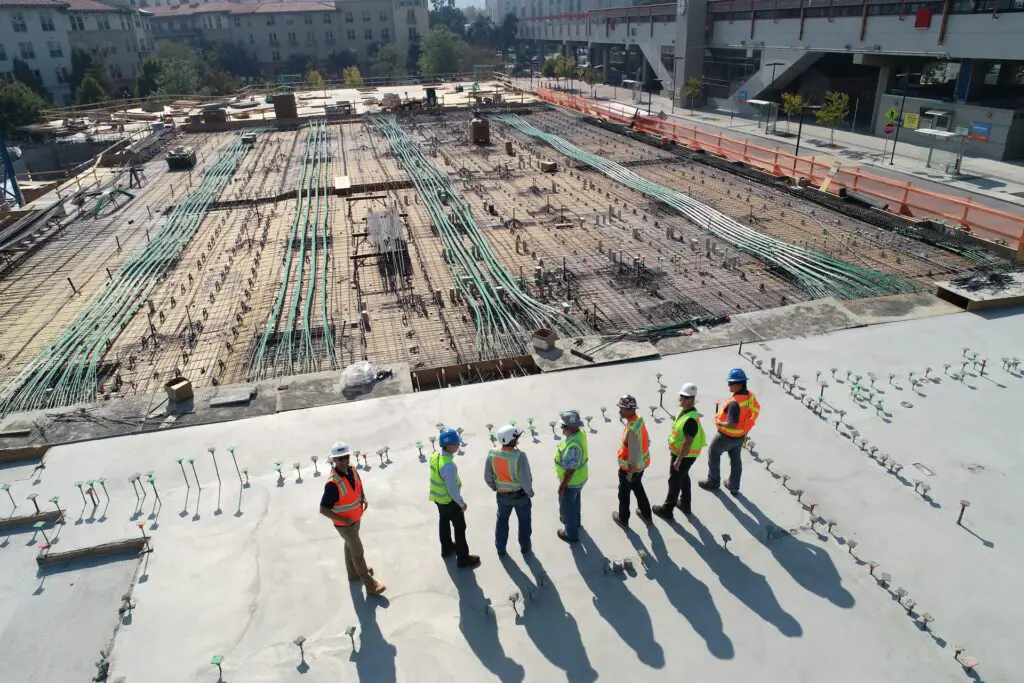In today’s competitive construction industry, optimizing your business for increased revenue is not just a desire but a necessity. With changing market dynamics and evolving customer expectations, staying ahead requires strategic planning and implementation.
Revenue optimization isn’t just about making more money; it’s about maximizing the potential of your construction business. It involves a holistic approach encompassing various aspects, from streamlining operations to embracing innovative technologies and satisfying customers.
In this post, we’ll give you nine ways to optimize your construction business revenue:
1. Analyze Current Business Practices
Before making any changes, evaluating your existing business model is crucial. Optimizing revenue starts with scrutinizing your processes, identifying strengths, weaknesses, opportunities, and threats, and understanding how your business operates within the industry.
Revenue streams are the lifeblood of any construction business. Beyond the apparent income from projects, it’s essential to recognize other potential sources of revenue, such as maintenance contracts, consulting services, or selling construction materials.
Profit margins provide insights into the financial health of your construction business. By examining your profit margins, you can identify areas where costs may be too high, or you could charge more for your services.
2. Streamline Business Operations
Efficient workflows are essential for maximizing productivity and minimizing waste in construction projects. By optimizing your processes, you can reduce delays, improve project timelines, and ultimately increase profitability.
Streamlining your business can also minimize project risks and protect your business’s bottom line. Construction projects are inherently risky, with factors such as budget overruns, delays, and safety hazards posing potential threats to your business.
Effective resource management can be achieved by streamlining operations, from construction materials to equipment and human resources. By carefully planning and allocating resources, you can minimize costs, reduce downtime, and maximize productivity on your construction projects.
3. Invest in Construction Software
The construction industry is transforming digitally, with technology crucial in improving efficiency and productivity. By embracing construction software and tools, you can streamline processes, enhance communication, and stay competitive in a rapidly evolving market.
Effective collaboration is vital for successful construction projects. Collaboration tools, such as project management software and communication platforms, enable real-time communication, file sharing, and task management, ensuring everyone is on the same page and projects stay on track. Using a SaaS procurement tool can help you in the software selection process, enabling you to choose the right cloud-based solutions that align with your specific needs and drive long-term success.
Construction software offers numerous advantages, including improved project management, cost tracking, scheduling, and reporting capabilities. Investing in the right software solutions can streamline operations, reduce errors, and deliver better results to your clients.
4. Push Strategic Marketing Initiatives
A strong brand identity sets your construction business apart and builds trust with potential clients. By defining your brand values, mission, and unique selling propositions, you can create a compelling brand identity that resonates with your target audience.
Identifying and targeting niche markets can help you stand out in a crowded industry. By focusing on specific demographics, industries, or project types, you can tailor your marketing efforts and services to meet the needs of a specialized audience, ultimately increasing your chances of success.
Digital marketing offers a cost-effective way to reach and engage with potential clients. You can increase brand awareness, generate leads, and drive conversions for your construction business by leveraging social media, email, and content marketing channels.
5. Enhance Customer Experience
Client satisfaction should be at the forefront of your business strategy. You can build trust, loyalty, and repeat business by exceeding customer expectations, leading to increased revenue through referrals and positive word-of-mouth.
Strong relationships with clients, suppliers, subcontractors, and other stakeholders are invaluable in the construction industry. By fostering open communication, mutual respect, and collaboration, you can create a network of partners who are invested in your success.
Referral programs are a powerful tool for generating new business. You can tap into new markets and expand your client base with minimal investment by incentivizing existing clients and partners to refer new customers to your business.
6. Diversify Revenue Streams
Diversifying your revenue streams reduces dependence on a single source of income and opens up new growth opportunities. You can tap into new markets and revenue streams by expanding into related services or products, such as property development, renovation services, or construction consulting.
Expanding into new geographic markets or industry sectors can help you reach new customers and diversify your client base. You can strategically expand your business and increase revenue potential by identifying emerging trends, market gaps, and untapped opportunities.
Strategic partnerships allow you to leverage other organizations’ expertise, resources, and networks to achieve mutual goals. By collaborating with complementary businesses, such as architects, engineers, or suppliers, you can offer comprehensive solutions, access new markets, and create additional value for your clients.
7. Maximize Project Management
Clear objectives and milestones are essential for keeping construction projects on track and ensuring they are completed on time and within budget. By defining project goals, establishing measurable targets, and creating realistic timelines, you can set clear expectations and motivate your team to succeed.
Project management software streamlines project planning, execution, and monitoring, providing scheduling, resource allocation, task management, and collaboration tools. By leveraging project management software, you can improve communication, coordination, and transparency, increasing efficiency and productivity on your construction projects.
Regular performance reviews allow you to evaluate project progress, identify areas for improvement, and recognize achievements. By conducting performance reviews with your team, soliciting client feedback, and analyzing project data, you can identify patterns, trends, and opportunities for optimization, ultimately improving project outcomes and profitability.
8. Establish Key Performance Indicators
Revenue metrics provide insights into your construction business’s financial performance and growth. By tracking key revenue metrics, such as total revenue, profit margins, and revenue per project, you can assess the effectiveness of your strategies, identify areas for improvement, and make informed decisions to maximize profitability.
Profitability ratios measure the efficiency and effectiveness of your operations in generating profits. By analyzing profitability ratios, such as gross profit margin, net profit margin, and return on investment, you can assess the financial health of your business, benchmark performance against industry standards, and identify opportunities for optimization.
Data-driven decision-making is essential for optimizing your construction business for increased revenue. By analyzing data insights, such as customer feedback, project performance, and market trends, you can identify patterns, trends, and opportunities, enabling you to make strategic adjustments and improvements to your business strategies.
9. Innovate and Adapt
Creativity and innovation are essential for staying competitive and driving growth in the construction industry. By fostering a culture of creativity and innovation within your organization, encouraging new ideas and experimentation, and rewarding ingenuity and problem-solving, you can inspire your team to think outside the box and explore new opportunities for innovation.
The construction industry is constantly evolving, with changes in technology, regulations, and market dynamics shaping the landscape. By remaining agile and adaptable to market changes, responding quickly to emerging trends and shifting customer preferences, and continuously refining your strategies and processes, you can stay ahead of the curve and maintain a competitive edge in the market.
Continuous improvement is a mindset that drives ongoing learning, growth, and refinement in your construction business. By seeking feedback from clients and stakeholders, identifying areas for improvement, and implementing incremental changes and innovations, you can enhance the quality of your services, increase efficiency, and drive sustainable growth over time.
Conclusion
Optimizing your construction business for increased revenue requires a multifaceted approach encompassing various aspects, from streamlining operations and enhancing customer experience to embracing technology and innovation. By prioritizing revenue optimization strategies and continuously striving for improvement, you can position your business for long-term success and profitability in a competitive market.
The construction industry is ripe with opportunities for growth and innovation. By staying informed about the construction tech stack and industry trends, networking with peers, and embracing new technologies and practices, you can position your business for success in future years.
As you continue to evolve and adapt to changing market dynamics, the possibilities for growth and expansion are limitless.










0 Comments